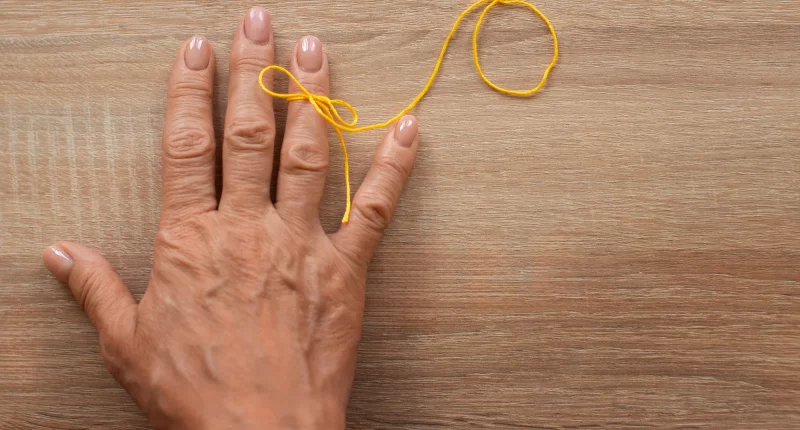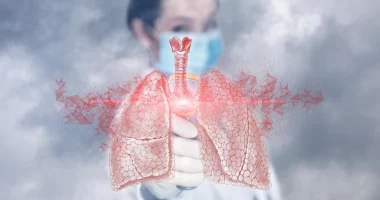Beau’s lines are lines that run horizontally across your nails, appearing as ridges or indentations on both toenails and fingernails. These lines are a visible signal that something has disrupted the normal growth of your nails
The exact reasons why Beau’s lines occur aren’t fully clear. They often appear after a period where nail growth is interrupted, which can happen due to various reasons like infection, illness, or injury. These disruptions affect the way nails grow and can lead to the formation of these lines.
To treat Beau’s lines effectively, it’s important to address and manage the main reason that disrupted nail growth. By doing so, your nails can start to grow normally again, slowly eliminating Beau’s lines as new nail tissue forms without interruption.
Symptoms
The signs of Beau’s lines can differ widely because they can be caused by various factors. However, there are some frequent signs to look out for. One typical symptom is the presence of horizontal depressions or ridges across the nail surface. These indentations can be able to identify and can affect both the toe and fingernails.
Additionally, Beau’s lines can sometimes cause changes in the appearance of the nails, like yellowing or discolorations that resemble fungal infections. These changes in color can be concerning but are often a result of the underlying issue that caused Beau’s lines in the first place.
It’s also important to note that other symptoms may accompany Beau’s lines, depending on what caused them initially. These additional signs can differ widely and might relate to a particular health condition or injury that disturbs normal nail growth.
Causes of Beau’s lines
The accurate cause of Beau’s lines remains unclear, but they develop when something interrupts the normal growth of the nail beneath the cuticle. Despite this uncertainty, several factors are known to contribute to this condition.
One significant group of contributors includes various infections and health conditions that disrupt nail growth. Diseases such as syphilis, diphtheria, mumps, measles, and malaria, among others, can all lead to the development of ridges or depressions in the nails known as Beau’s lines. These conditions affect the body in ways that interfere with the nail’s ability to grow normally.
Injuries also play a crucial role in causing Beau’s lines. Activities like picking at cuticles or nails, frequent pedicures or manicures, and traumatic events that reduce blood flow to the fingers or hands—like fractures or nerve injuries—are known triggers. Even being in a splint or cast after a hand or wrist injury can disturb nail growth and contribute to the formation of Beau’s lines.
External stressors, both physical and psychological, can further exacerbate the condition. Factors like extreme cold exposure, psychological stress, and malnutrition—especially deficiencies in nutrients like zinc—can all impact nail health and contribute to the appearance of Beau’s lines.
Medications
Certain medications, particularly chemotherapy drugs, have been linked to Beau’s lines, which are noticeable horizontal ridges on toenails and fingernails. If you undergo chemotherapy, you may observe these lines appearing quite soon after starting treatment, typically within 2 to 3 weeks.
Chemotherapy medications work by impacting cells in the body that grow rapidly, including those responsible for nail growth located below the cuticle. This interference slows down the normal growth process of the nail, resulting in the formation of Beau’s lines. The affected cells reproduce at a slower rate under the influence of these drugs, which directly contributes to the development of these ridges or depressions on the nails. This process helps explain why Beau’s lines commonly appear in individuals undergoing chemotherapy treatment.
Management
Managing Beau’s lines focuses on addressing the root cause that led to their development.
Once the main cause is effectively managed, Beau’s lines usually resolve on their own within 3 to 6 months. During this time, the affected nails will gradually grow out, allowing the ridges to be naturally trimmed off as new nail tissue replaces the old. For instance, if Beau’s lines were triggered by chemotherapy, the nails will typically return to normal growth once chemotherapy treatment concludes.
The key to treating Beau’s lines is patience, as it takes time for nails to regenerate and for the ridges to disappear naturally. By managing and addressing the underlying issue, whether it’s a health condition, medication side effect, or injury, you can support the restoration of healthy nail growth and relieve the appearance of Beau’s lines over time.
Diagnosis
Determining Beau’s lines themselves is straightforward and usually involves a physical test of your nails. However, figuring out what caused them can be more complex, and one needs to identify the underlying reason before deciding on treatment.
To determine the cause of the ridges on your nails, doctors will consider your symptoms, medical history, and current health. They may perform tests based on specific symptoms you’re experiencing. These tests could range from blood tests to imaging studies, depending on what might be causing the Beau’s lines. Identifying the root cause is essential for developing an effective plan to manage and treat Beau’s lines properly.
When to consult a healthcare professional
It’s important to see your healthcare professional if you recognize any horizontal ridges in the nails. These ridges can be caused by various factors, some of which may indicate more serious health conditions. Getting a proper diagnosis is crucial to eliminate any underlying issues that could be contributing to the development of these ridges. Your healthcare provider can help determine the cause and recommend appropriate treatment or management options based on their evaluation. Taking action early can ensure that any potential health concerns are addressed promptly.
Summary
Beau’s lines are horizontal ridges on nails caused by disruptions in nail growth due to factors like illness, injury, or medication. Symptoms include indentations, ridges, and discoloration. Various health conditions, injuries, and stressors contribute to their development.
Certain medications, particularly chemotherapy, can also cause these lines by affecting nail growth cells. Diagnosing the cause involves medical evaluation based on symptoms and health history. It’s important to consult a healthcare provider if you notice these ridges to rule out serious conditions and get appropriate treatment.









